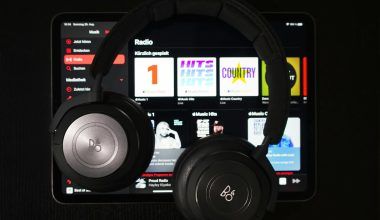Write an effective musician bio is the public façade of a musician, and in order to stand out, it has to be a killer one. But the thing is, as a musician, you write songs for a living, not bios. In an ideal world, we would hire a professional to write it for us, as having an outside perspective to write about you might seem easier. However, hiring a writer can be pricey.
But a biography of a musician is one of the key tools that communicate to the people why they should have an interest in you and why they should listen to your music. Apart from that, it has to be on your social media and music streaming channels, ready for your events, gigs, festival applications, and media press kit. Knowing how to write an effective musician bio is crucial.
So here are the key elements to keep in mind to write a compelling and succinct musician bio.
Key Elements to Write an Effective Musician Bio
1. Be Concise and Engaging
People have a short attention span when it comes to reading content, so you only have a short time to deliver your story and convert a passive reader into a true fan. Every word counts, and the content has to be engaging and concise. Use vivid language and compelling narratives to keep the reader hooked.
2. Share Your Origin Story
Conceptualize how you started as an artist. What was the entry point that pushed or dragged you into the world of creating or producing? Why are you passionate about the music industry? Mention if there are any struggles that you had to overcome to make it into this world. Who inspires you? Sharing these details helps readers connect with you on a personal level.
3. Write in Third Person
Write your bio from a third-person point of view. This gives it a professional tone and makes it easier for media outlets to use your bio without needing to make adjustments.
4. Different Versions for Different Platforms
Have different versions of your bio for different purposes (it has to be the same story, of course). A long bio (500 – 750 words) for your website, a short bio (250 – 350 words) for your social media and music streaming accounts, and an even shorter one (1 – 2 lines) for your Instagram and Twitter accounts. This flexibility ensures you have a suitable bio for any context.
5. Focus on Key Highlights
Avoid adding a boring list of awards, releases, gigs, reviews, or info about your training and collaborations unless they are particularly noteworthy. Only include what is necessary and relevant to your current career and music.
Structuring Your Bio to Write an Effective Musician Bio
1. Start with a Short and Engaging Introduction
Your introduction should grab the reader’s attention immediately. Use a compelling hook that draws them in and makes them want to read more.
2. Add Background Information
Provide some background about yourself. Where are you from? How did you get started in music? This section should give readers a sense of your journey and influences.
3. Describe Your Music
Add a couple of words about your music. What is it like? What are your influences? How would you describe your sound? This helps readers understand your musical style and what sets you apart from other artists.
4. Highlight Your Career Achievements
Add your career highlights and achievements. You can include significant milestones, such as albums released, notable performances, awards, and collaborations. This section should showcase your accomplishments and give readers a reason to take you seriously.
5. Current Projects and Future Plans
Mention what you are currently working on and what your plans are for the future. This keeps your bio up-to-date and shows that you are an active and evolving artist.
Proofreading and Final Touches
And finally, make someone proofread your bio, check for spelling errors, and ensure the story flows nicely. Once polished, add it to your artist website, social media, and streaming profiles.
For further reading, explore these related articles:
- How To Make YouTube Singles That Can Go Viral
- How to Earn with SoundCloud
- Artist Royalties on Spotify: A Comprehensive Guide
For additional resources on music marketing and distribution, visit Deliver My Tune.






